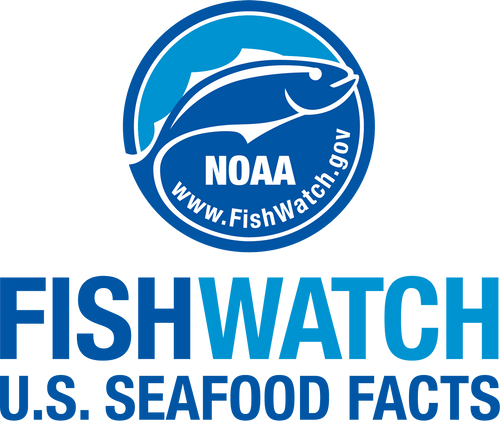 Yellowtail rockfish (Sebastes flavidus) close up on rocky reef habitat at 116 meters depth. Credit: Linda Snook, Cordell Bank National Marine Sanctuary
Yellowtail rockfish (Sebastes flavidus) close up on rocky reef habitat at 116 meters depth. Credit: Linda Snook, Cordell Bank National Marine Sanctuary
Yellowtail rockfish (Sebastes flavidus) close up on rocky reef habitat at 116 meters depth. Credit: Linda Snook, Cordell Bank National Marine Sanctuary
About the Species
 Yellowtail rockfish (Sebastes flavidus) close up on rocky reef habitat at 116 meters depth. Credit: Linda Snook, Cordell Bank National Marine Sanctuary
Yellowtail rockfish (Sebastes flavidus) close up on rocky reef habitat at 116 meters depth. Credit: Linda Snook, Cordell Bank National Marine Sanctuary
Yellowtail rockfish (Sebastes flavidus) close up on rocky reef habitat at 116 meters depth. Credit: Linda Snook, Cordell Bank National Marine Sanctuary
Yellowtail Rockfish can be found in the Northeast Pacific, from Southern California to Alaska. It is regularly found over deep reefs from the surface to depths of 1,800 feet.
NOAA Fisheries and Pacific Fishery Management Council manage the U.S. West Coast yellowtail rockfish fishery under the Pacific Coast Groundfish Fishery Management Plan. In addition to yellowtail rockfish, the FMP covers over 90 different species including other rockfish and flatfish.
In Alaska, NOAA Fisheries and the North Pacific Fishery Management Council manage yellowtail rockfish under the Fishery Management Plan for Groundfish of the Gulf of Alaska.

Population
The Northern Pacific Coast stock is not overfished.

Fishing Rate
Not subject to overfishing.

Habitat Impact
Most fishing gear used to harvest yellowtail rockfish rarely contacts the ocean floor and has minimal impacts on habitat. Area closures and gear restrictions protect sensitive rocky, cold-water coral and sponge habitats from bottom trawl gear.

Bycatch
Regulations are in place to minimize bycatch of overfished and protected species.
Population Status
- There are two stocks of yellowtail rockfish: northern Pacific coast and one stock contained in the Minor Shelf Rockfish South Complex. According to the most recent stock assessments:
- The northern Pacific coast stock is not overfished (2017 stock assessment) and not subject to overfishing based on 2022 catch data. Summary stock assessment information can be found on Stock SMART.
- Yellowtail rockfish is managed as part of the Minor Shelf Rockfish South Complex, but this stock complex has not been assessed so the overfished status is unknown. This complex is not subject to overfishing based on 2022 catch data.
Appearance
- Yellowtail rockfish are greyish brown on top and fade to white on the belly.
- Their body has trace yellow spotting.
- Yellowtail tail fins are yellowish green.
- Their other fins have a darker yellowish green coloration.
Biology
- Yellowtail rockfish mature between three and five years old.
- They can live up to 50 years.
- They grow more than two feet in length.
- Females can produce between 50,000 and 600,000 eggs, depending on the size of the female.
- Yellowtail rockfish have internal fertilization and the females give birth to live young.
- Adults feed on shellfish, such as shrimp, and small forage fish, such as anchovies.
- Yellowtail rockfish are unique in that they can rapidly release gas from their swim bladders.
- When caught at depth the yellowtail rockfish can avoid barotrauma that kills most other species.
Where They Live
Range
- Yellowtail rockfish are found along the Pacific coast of North America and range from Kodiak Island, Alaska to Baja California, Mexico.
Habitat
- Yellowtail rockfish inhabit depths ranging from 0 to 1800 feet, and are commonly found along the middle continental shelf, near the ocean floor.
- Larvae and juveniles live near the surface, while older juveniles migrate deeper to near the ocean floor.
- Adults are semi-pelagic or pelagic and spend time near steep slopes and above rocky reefs.
Fishery Management
- NOAA Fisheries and the Pacific Fishery Management Council manage the yellowtail rockfish fishery on the West Coast.
- Yellowtail rockfish are managed as a single stock north of Cape Mendocino, California, and southward, as part of the Minor Shelf Rockfish South complex.
- Managed under the Pacific Coast Groundfish Fishery Management Plan:
- Permits and limited entry to the fishery.
- Limit on how much may be harvested in one fishing trip.
- Certain seasons and areas are closed to fishing.
- Gear restrictions help reduce bycatch and impacts on habitat.
- A trawl rationalization catch share program that includes:
- Catch limits based on the population status of each fish stock and divided into shares that are allocated to individual fishermen or groups.
- Provisions that allow fishermen to decide how and when to catch their share.
- Yellowtail rockfish have been underutilized. The recent harvest rule changes to the catch share program will allow increased catches of underutilized species, such as yellowtail and chilipepper rockfish, lingcod, and Pacific cod. These changes were possible because of improvements observed in other stocks that had previously constrained the harvest of fish like yellowtail rockfish due to low population levels.
Harvest
- Commercial fishery:
- In 2023, commercial landings of yellowtail rockfish totaled 6.7 million pounds and were valued at $1.7 million, according to the NOAA Fisheries commercial fishing landings database. The majority of landings are in Oregon and Washington.
- Gear types, habitat impacts, and bycatch:
- Primarily harvested with midwater trawl gear, which has minimal impacts on ocean bottom habitats. To a lesser extent, harvested with bottom trawl gear.
- Midwater and bottom trawls may sometimes catch other species of fish, including overfished and protected species.
- Gear restrictions, closed areas, and catch share programs limit when, where, and how much trawl fishermen can harvest to reduce bycatch of other species.
- Rockfish conservation areas eliminate fishing in areas on the West Coast where overfished rockfish species co-occur with target stocks, like canary rockfish. These closed areas help prevent bycatch of overfished rockfish.
- Yellowtail rockfish are often caught incidentally in the Pacific whiting fishery.
- Managers are working to reduce incidental catch through the use of annual catch limits and catch shares.
Scientific Classification
| Kingdom | Animalia |
|---|---|
| Phylum | Chordata |
| Class | Actinopterygii |
| Order | Scorpaeniformes |
| Family | Scorpaenidae |
| Genus | Sebastes |
| Species | flavidus |
Last updated by NOAA Fisheries on 03/26/2025
Featured News
 Recreational anglers fish for rockfish on a recreational fishing boat off Southern California. Photo: Mark Kalez
Recreational anglers fish for rockfish on a recreational fishing boat off Southern California. Photo: Mark Kalez
California Charter Boats Contribute to Rockfish Research, Support Sustainable Fishing
 3D render and imaging of topographic map of Alaska showing the Gulf of Alaska, Aleutian Islands and Bering Sea. Satellite images courtesy of NASA. Credit: Frank Ramspott
3D render and imaging of topographic map of Alaska showing the Gulf of Alaska, Aleutian Islands and Bering Sea. Satellite images courtesy of NASA. Credit: Frank Ramspott
 Snow capped mountains reflect off the waters of the Prince William Sound in the Gulf of Alaska. Credit: NOAA Fisheries.
Snow capped mountains reflect off the waters of the Prince William Sound in the Gulf of Alaska. Credit: NOAA Fisheries.
Seafood Facts

Is Yellowtail Rockfish Sustainable?
U.S. wild-caught Yellowtail rockfish is a smart seafood choice because it is sustainably managed and responsibly harvested under U.S. regulations.
Availability
Year-round.
Source
U.S. wild-caught from Kodiak Island Alaska to Baja California.
Taste
Very mild, slightly sweet flavor.
Texture
Very lean with medium to firm texture and medium sized flakes.
Color
Meat is glistening bright white with a pinkish sheen.
Health Benefits
Rockfish are high in selenium.
Nutrition Facts
Servings: 1; Serving Weight: 100 g (raw); Calories: 90; Protein: 18.36 g; Total Fat: 1.34 g; Total Saturated Fatty Acids: 0.34 g; Cholesterol: 50 mg; Selenium: 63 mcg; Sodium: 74 mgMore Information
Rockfish Recipes
Looking for some ways to add rockfish into your rotation? We have you covered with these recipes for grilled rockfish kebabs, coconut-crusted rockfish tacos, and more!

Last updated by NOAA Fisheries on 03/26/2025
Seafood News
 Fresh-caught taʻape on ice. Credit: Conservation International Hawaiʻi.
Fresh-caught taʻape on ice. Credit: Conservation International Hawaiʻi.
Reducing Waste and Feeding Communities in Hawaiʻi with a Whole Fish Approach
 Chef Tyler Hadfield’s Curried Skate Wings with Tomato-Masala Chutney
Chef Tyler Hadfield’s Curried Skate Wings with Tomato-Masala Chutney
Ring In the New Year With These Crowd-Favorite Seafood Recipes
 NOAA Fisheries, in collaboration with Blue Ocean Mariculture, is conducting a multi-year pilot study to evaluate observational methods and tools for studying Hawaiian monk seal behavior. Courtesy of Blue Ocean Mariculture
NOAA Fisheries, in collaboration with Blue Ocean Mariculture, is conducting a multi-year pilot study to evaluate observational methods and tools for studying Hawaiian monk seal behavior. Courtesy of Blue Ocean Mariculture
AI Meets Aquaculture to Study Hawaiian Monk Seal Interactions With Net Pens
 Tonya Wick aboard a fishing vessel at sea in 1998. Photo courtesy of Tonya Wick
Tonya Wick aboard a fishing vessel at sea in 1998. Photo courtesy of Tonya Wick





